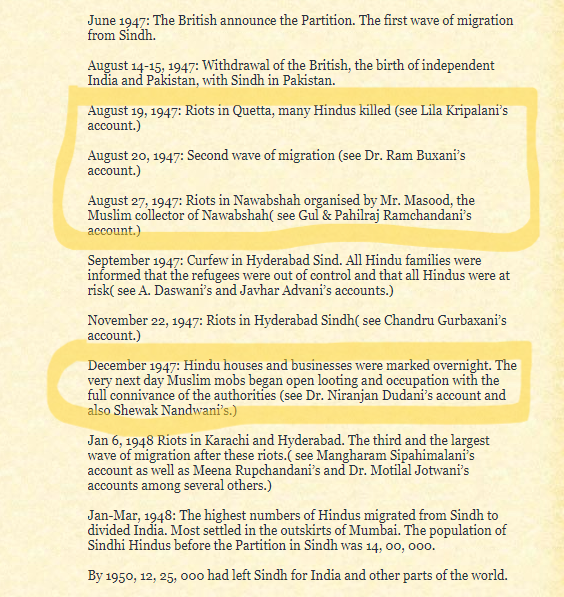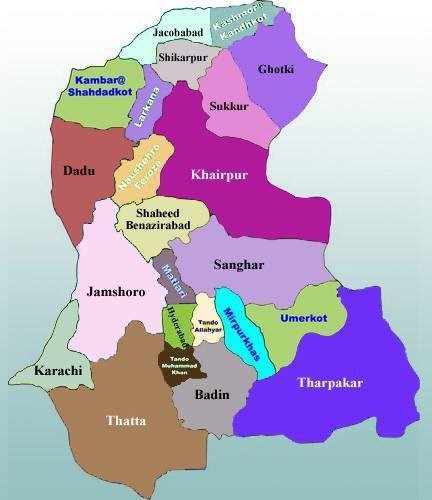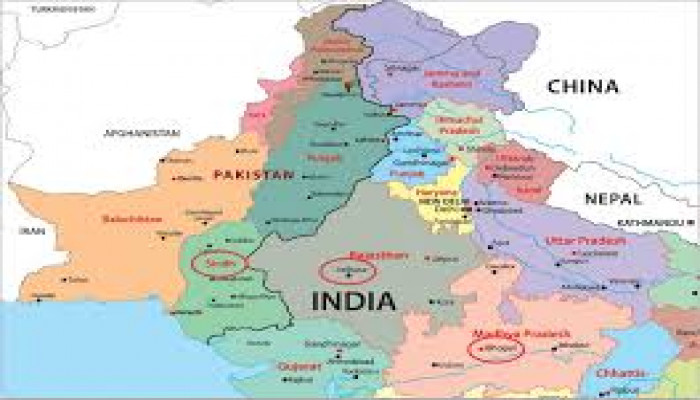Sindh: The Unheard Voices of Partition
- In History & Culture
- 09:19 PM, Apr 03, 2022
- Bharti Kundal
The fate of Sindh was sealed in 1947. India achieved freedom but the future of Sindhi Hindus was in shackles. They had 2 choices i) to stay in their motherland and ii) change their Religion. In both cases, they were to lose. 1.4 million Hindus were present in Sindh during the partition and out of which at least 1.2 million left to reach India. The exodus of Sindhi Hindus which began in 1947 from their historical homeland is still underway with many of them concentrated in Adarsh Nagar and Jaisalmer refugee camps in India. The community has been left marginalized out of the public discourse and their exodus from Sindh has never become a mainstream discussion. As a result, the indigenous Sindhi are facing the threat of being converted into a permanent minority in Pakistan.
Here are some events that led to a mass-scale exodus of Hindus from Sindh.

At the time of partition, Sindh was a British India province. As for other provinces like Punjab, Bengal; Sindh could have been partitioned and the land could have been retained for Sindhi Hindus. Hindus were in absolute majority in four of Sindh’s five largest cities Hyderabad 70% —Umarkot, Nagar Parkar, Mithi, and Chachro —adjoining India had Hindu majority of 57%; Karachi being an exception which had 46% of Hindu population. South east Sindh and adjoining areas should have been compensated to accommodate Hindus leaving from other parts of Sindh.
In 1928, when the separation of Sindh from Bombay presidency was underway, Jodhpur claimed Umarkot (originally known as Amer Kot) as its part. The British agreed but the Sindh Congress denied it. In 1930, The Muslim League proposed Sindh as a part of the future Pakistan proposal as a Muslim majority, this wasn't opposed by any Indian leaders. PM Nehru declined the Kahirpur accession, Khairpur was as big as a district. The Mir of Khairpur was in the custody in Pune and he agreed to accede to India on the condition that he would be restored. Khairpur was a Princely state adjoining India. The Congress could have saved Sindhi Hindus from the misery they faced after Partition had the Cabinet Mission Plan executed well.

Pandit Nehru in his letters to Padmaja Naidu wrote: "I don’t know Sindh. I don’t feel attracted to it. The Sindhi people have their good qualities and I rather like them. But they are a curious mixture of the Muslim feudal classes and the Hindu bania class, neither very admirable, as classes go. Still they have push and energy and that is something to be thankful for. They seem to be singularly devoid of any artistic sense. And the colour they sport in their striped pyjamas are a trial.”
Morarji Desai passed the Bombay Refugee Act which was viewed to be treating the refugees in an inhumane way. The Bombay government was not prepared for a large number of Sindhi refugees and their initial response was not sympathetic towards the displaced community. Ram Jethmalani fought against this and pleaded the law to be declared unconstitutional, a case that he won.
Today the Hindu Sindhi community is spread largely across Indian states of Rajasthan, Madhya Pradesh, Maharashtra, and Gujarat. Despite much of the difficulties, the community has played a role in the country's development. They have preserved their culture and focused on their values of hard work, and kindness with their emphasis on education and entrepreneurship.
References: [1] The Sindh Story: KR Malkani
[2] Nehru’s Major Blunders: Rajnikant Puranik
[3] Sindhi Reflections : Lata Jagtiani
Image source: Hinduism Today







Comments